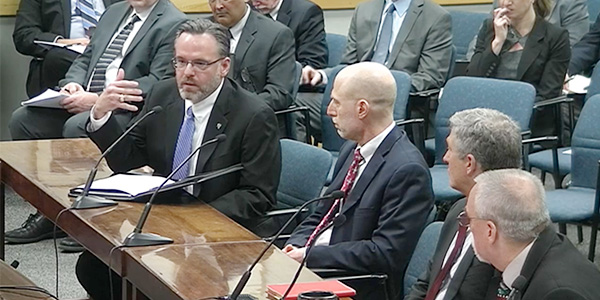By Tom Kleckner
The indefinite mothballing of a 470-MW coal-fired plant has reduced ERCOT’s “pretty scary” reserve margin of 8.1% to 7.4%, prodding the Texas Public Utility Commission into ordering several market changes.
The PUC on Thursday directed ERCOT to tweak its operating reserve demand curve (ORDC), which provides a price adder during periods of generation scarcity, and to proceed with implementing real-time co-optimization.
“I was already concerned, and with [this plant] coming out, it’s heightened my concerns,” said PUC Chair DeAnn Walker, whose “pretty scary” comment has been making the rounds in the trade press. She made the comment following the December release of ERCOT’s last capacity, demand and reserves (CDR) report, which revealed the 8.1% reserve margin. (See ERCOT Predicts Tight Reserve Margin for 2019.)
Shortly before the open meeting began, ERCOT announced it had completed a reliability analysis and determined that the city of Garland’s Gibbons Creek Generating Station was not required to support system reliability. That clears the way for the city to indefinitely suspend the plant’s operations, effective June 1.
ERCOT representatives assured the PUC that it can meet demand with the new historically low reserve margin by following its emergency operations procedure. That would entail procuring emergency response service, voltage-reduction measures and releasing reserves.
“There’s some talk that 7.4% is not that big of a deal,” Walker said. “I believe you can absolutely run this system in a reliable manner, but when you hear 7.4%, does that give you a lot of comfort?”
“At that reserve margin level, it’s likely that we will have to take advantage of those additional resources,” replied Dan Woodfin, ERCOT’s senior director of system operations. “We will likely have to do that on a number of occasions this summer, but there’s not an indication at this point in time that we will have to implement rotating outages.”
Woodfin did not discount the use of rotating outages in the case of extreme weather, low wind output or forced generation outages.
“Again, I have full confidence in ERCOT managing and running our system, and if we have a large unit trip this summer on the hottest day of the year, I think we can manage this,” Walker said. “But I also believe there are things this commission can do.”
In a memo filed shortly before the PUC’s open meeting began, Walker suggested making a 0.25 standard deviation shift in the loss-of-load probability calculation and using a single blended ORDC curve as soon as practicable. She suggested a second shift of 0.25 in the standard deviation next year.
Both Sides
The change would lead to the ORDC’s more frequent use, and at higher levels.
Walker said the blended ORDC would also increase the development of demand response, distributed generation and self-generation, and could lead to delays in pending retirements and other units returning to service much more quickly.
Writing that real-time co-optimization would bring economic and operational benefits to the market, Walker also proposed that PUC staff bring back to the commission’s Feb. 7 meeting a list of policy issues for stakeholder comment and asked that ERCOT provide a high-level implementation plan and timeline.
Walker said including marginal losses in the security-constrained economic dispatch is not “worth the implementation cost and market disruption.”
Commissioners Arthur D’Andrea and Shelly Botkin agreed with Walker’s proposals, though Botkin said she was not prepared to take the second step with the ORDC just yet.
ERCOT staff told the commission they could take the ORDC change to the grid operator’s Technical Advisory Committee on Jan. 30 and to the Board of Directors on Feb. 12. That would enable ERCOT to implement the revised ORDC by April.
“I think there are a lot of good arguments on both sides,” D’Andrea said. “I think all of us agree we’re going to stay committed to market principles and let our energy-only market work. I think acting now is prudent.”
Critics have said ORDC changes could increase electricity prices by as much as $4 billion annually. (See ERCOT Faces Tight Summer Margins, Market Changes.)
Vistra Energy released a statement in support of the actions, saying “proper price signals must be sent to incentivize investment in maintaining the existing generation facilities and developing new, more efficient technology” as the Texas market evolves from older, less-efficient technology.
In performing its transmission reliability assessment of Gibbons Creek, ERCOT said “the tools under its emergency procedures are adequate in maintaining grid reliability.”
Garland Power & Light in December submitted a notification of suspension of operations for the 35-year-old unit, which is operated by the Texas Municipal Power Agency. It had been operating seasonally since 2017 and returned to mothballed status in October.






